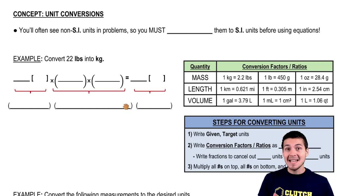Textbook Question
20°C water flows through a 2.0-m-long, 6.0-mm-diameter pipe. What is the maximum flow rate in L/min for which the flow is laminar?
 Verified step by step guidance
Verified step by step guidance Verified video answer for a similar problem:
Verified video answer for a similar problem:



 3:41m
3:41mMaster Ideal vs Real Fluids with a bite sized video explanation from Patrick
Start learning